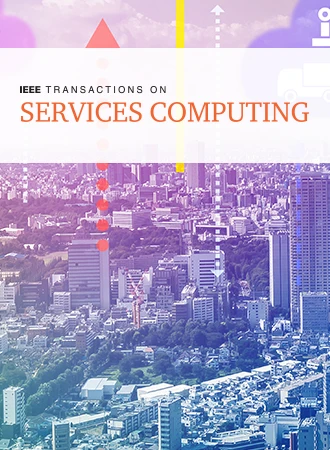基于轻型异构超图对比学习的混搭创建服务推荐
IF 5.5
2区 计算机科学
Q1 COMPUTER SCIENCE, INFORMATION SYSTEMS
引用次数: 0
摘要
Mashup技术使开发人员能够通过组合现有服务更容易地创建新的应用程序。随着mashup的普及,mashup创建服务推荐的研究也越来越受到关注。现有的推荐方法存在以下局限性:要么容易受到数据稀疏性问题的影响,要么在聚合高阶邻居时表现出过度平滑,导致相似且不特定的节点特征表示,要么只关注二部图而忽略了mashp -service生态系统中丰富的异构信息。为了解决这些问题,我们提出了一种基于轻异构超图对比学习(LHGCL)的mashup创建服务推荐方法。该方法首先通过组合mashup信息、服务信息、mashup-服务交互数据及其相关属性信息,构建一个异构超图。然后,设计了一个轻超图神经网络来捕捉混搭与服务之间的高阶关系。接下来,它应用对比学习来增强mashup和服务的表示。最后,它利用增强的mashup和服务的特征向量来预测服务的mashup首选项。在实际的ProgrammableWeb数据集上进行的综合实验证明了该方法的优越性和关键模块的有效性。本文章由计算机程序翻译,如有差异,请以英文原文为准。
Light Heterogeneous Hypergraph Contrastive Learning Based Service Recommendation for Mashup Creation
Mashup technology enables developers to create new applications more readily by combining existing services. As its popularity grows, research on service recommendation for mashup creation has gained increasing attention. Existing recommendation methods have the following limitations: either they are susceptible to data sparsity problems, or they exhibit over-smoothing when aggregating high-order neighbors, resulting in similar and non-specific node feature representations, or they only focus on bipartite graphs and neglect the rich heterogeneous information in the mashup-service ecosystem. To address these issues, we propose a service recommendation method for mashup creation based on
l
ight
h
eterogeneous hyper
g
raph
c
ontrastive
l
earning (LHGCL). This method first constructs a heterogeneous hypergraph by combining mashup information, service information, the mashup-service interaction data, and their related attribute information. Then, it designs a light hypergraph neural network to capture the high-order relationships between mashups and services. Next, it applies contrastive learning to enhance the representations of mashups and services. Finally, it utilizes the enhanced feature vectors of mashups and services to predict mashup preferences for services. Comprehensive experiments conducted on the real-world ProgrammableWeb dataset demonstrate the superiority of the proposed method and the effectiveness of its key modules.
求助全文
通过发布文献求助,成功后即可免费获取论文全文。
去求助
来源期刊

IEEE Transactions on Services Computing
COMPUTER SCIENCE, INFORMATION SYSTEMS-COMPUTER SCIENCE, SOFTWARE ENGINEERING
CiteScore
11.50
自引率
6.20%
发文量
278
审稿时长
>12 weeks
期刊介绍:
IEEE Transactions on Services Computing encompasses the computing and software aspects of the science and technology of services innovation research and development. It places emphasis on algorithmic, mathematical, statistical, and computational methods central to services computing. Topics covered include Service Oriented Architecture, Web Services, Business Process Integration, Solution Performance Management, and Services Operations and Management. The transactions address mathematical foundations, security, privacy, agreement, contract, discovery, negotiation, collaboration, and quality of service for web services. It also covers areas like composite web service creation, business and scientific applications, standards, utility models, business process modeling, integration, collaboration, and more in the realm of Services Computing.
 求助内容:
求助内容: 应助结果提醒方式:
应助结果提醒方式:


